Here is the nearly-full moon during the sunrise on Monday, January 9.
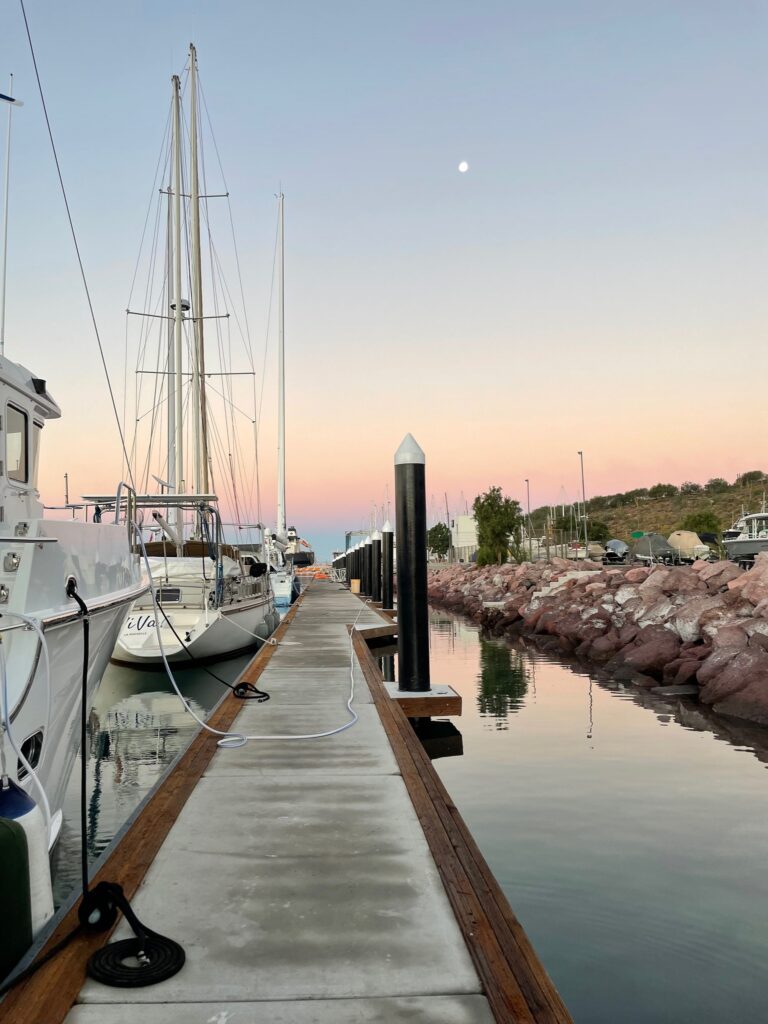
We arrived at the Museum of Whales and Sciences of the Sea at 10:15. Our friends on Sirena met us there. The entry fee was $2.00 USD per person, with an extra $1.00 USD per person for the guided tour. We opted for the guided tour. The museum was small, but the tour was detailed and informative, lasting about an hour and a half. In addition to whales, the museum also had displays on dolphins, sea lions, manatees, turtles and more.
We started in the evolution room, where the guide explained that ocean mammals, such as whales and dolphins, were originally land mammals that went into the sea for food and eventually evolved to live in the sea. He talked about how the different sea animals have evolved. For example, whales nostrils evolved from the front of their face to the top of their heads, and whales have a tiny foot that is currently evolving away. He talked a lot about how similar the bone structures of sea mammals were to various land mammals, especially humans.
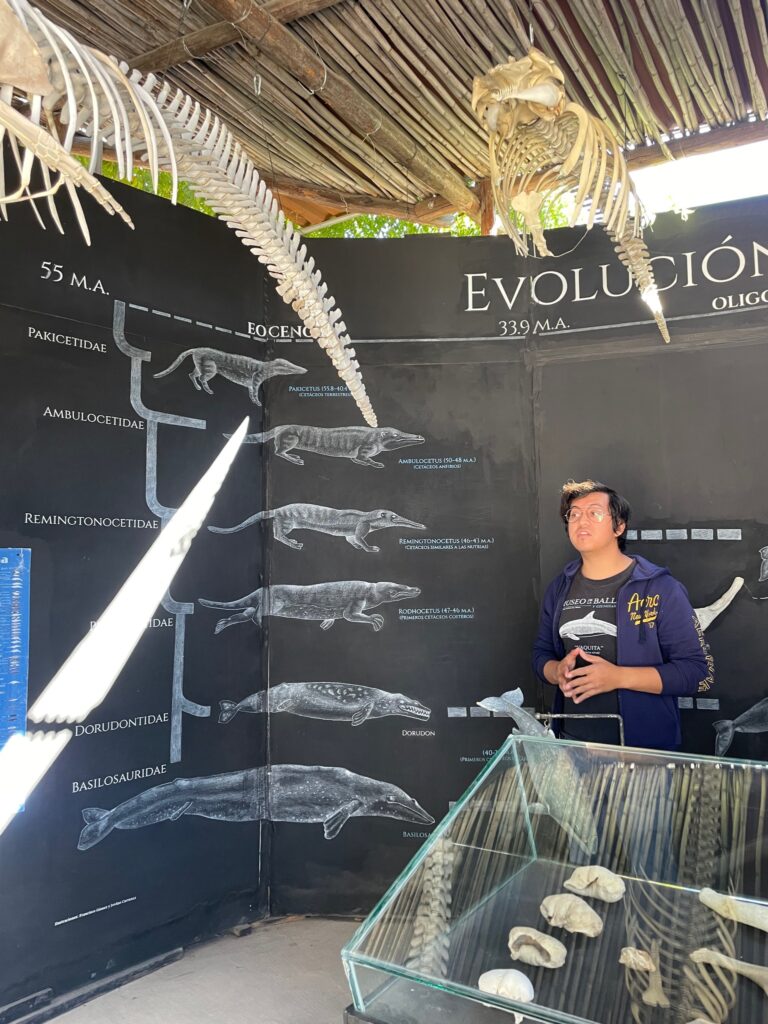
Some species of whales, such as humpback and blue whales, are filter feeders. He showed us the “teeth” of the filter feeders, which look more like a brush than a tooth. The hairs of the brush are made of keratin, the same material that makes up human hair and nails.
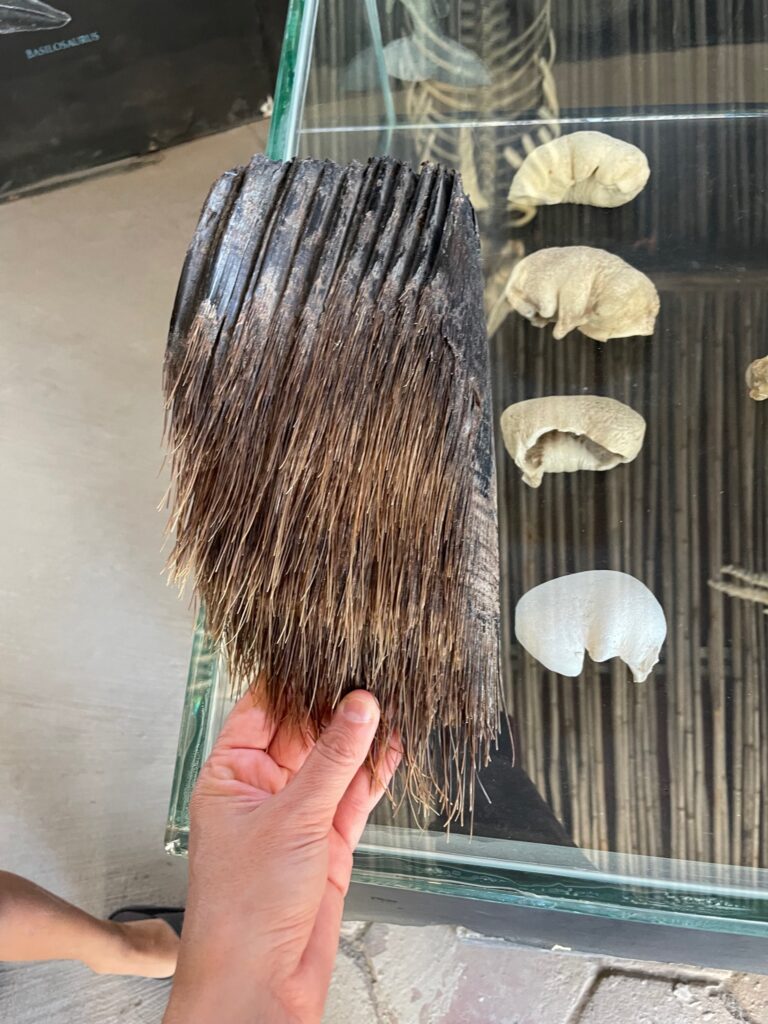
In the courtyard area between the different exhibit rooms were several exhibits of bones. This was the top half of the skull of a whale. If we recall what the guide said correctly, it was an adolescent, so it was not fully grown.
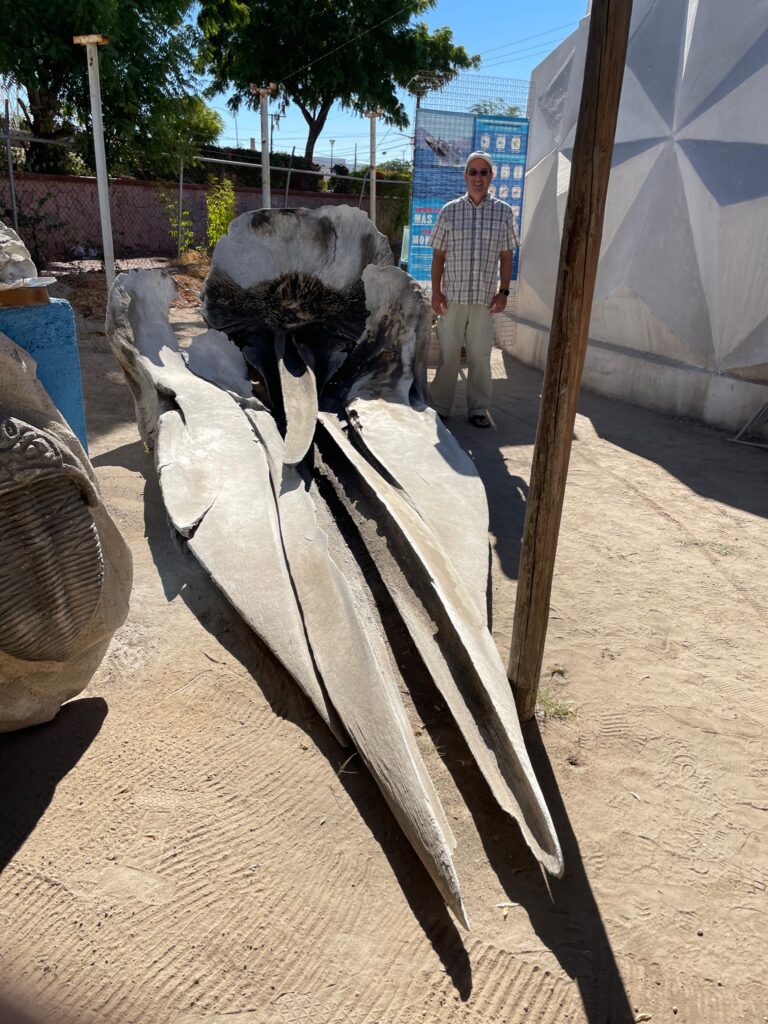
These were the lower jaws (AKA the bottom part of skull). One of them is the other half of the skull in the above photo.
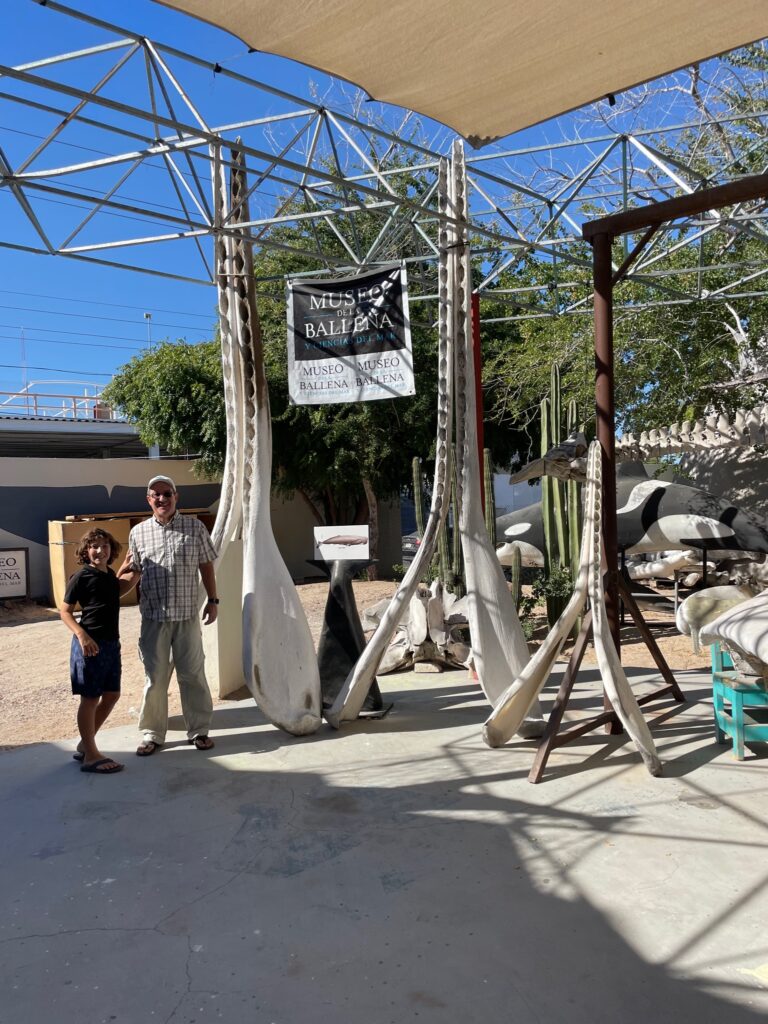
The next room had the bones and organs of various baby sea creatures. He again talked about the similarities between the organs of land mammals and ocean mammals. Interestingly enough, the brain of a dolphin is the closest to a human brain of any other species, including apes. If you look closely at the tallest jar, you’ll see that it does look like a human brain. Dolphins also have an organ on the top of their forehead, called a melon, that helps them with echolocations.
Keith was seriously grossed out by the organs. We think it is pretty safe to say that Keith is not destined to be a doctor.
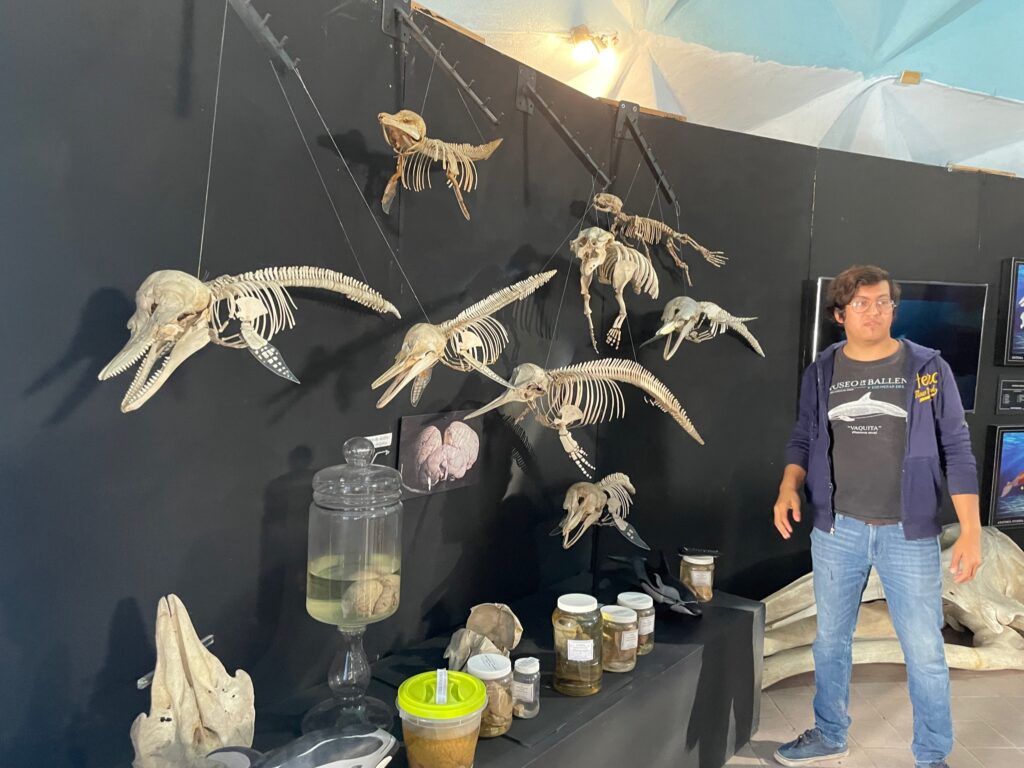
In the picture above, you can also see that the bones within the fins of the various creatures look like fingers in the human hand, that they have spines with vertebrae and rib cages.
Also in the second room were several images showing whale behavior with a written explanation of what the image was depicting, ie, migration patterns, hunting practices, birthing practices, lactation, etc. There are two types of grey whales, the ones that migrate to/from the Arctic and Mexico and those that migrate to/from the Arctic and Korea. All California grey whales are born on the Pacific side of Baja California. Fun fact: California grey whales used to migrate to San Diego Bay to birth their babies. But once San Diego became too populated, the whales moved farther south to birth their babies.
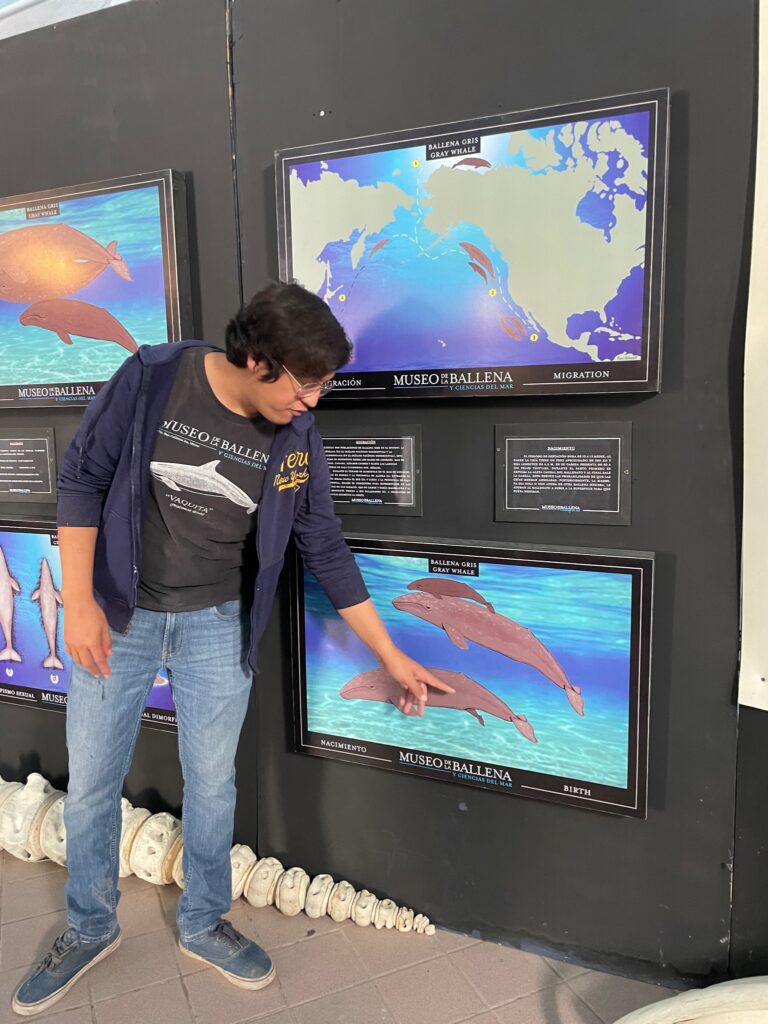
On our way to the next room, we stopped by the megaladon exhibit in the courtyard. The megaladon was a giant shark that is now extinct.
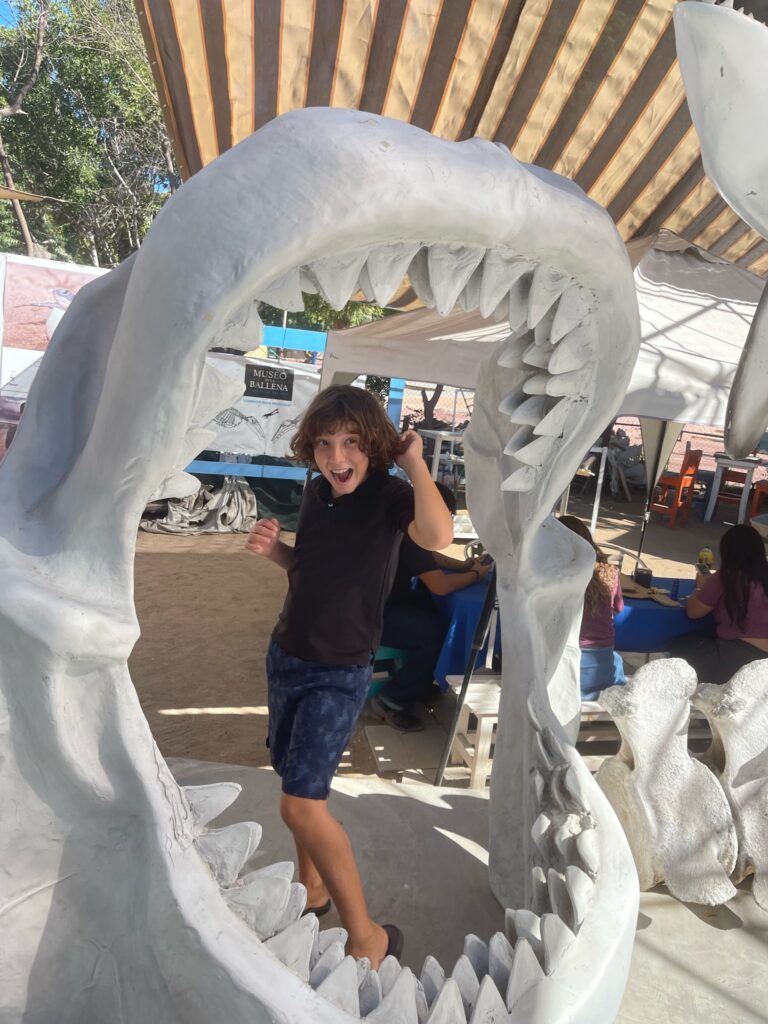
The next room had exhibits on orcas, manatees, and sea lions. If we recall correctly, the guide said that the large skeleton in the center was an orca that had grounded itself while chasing prey. While the other name for orca is “killer whale,” they are actually dolphins, not whales.
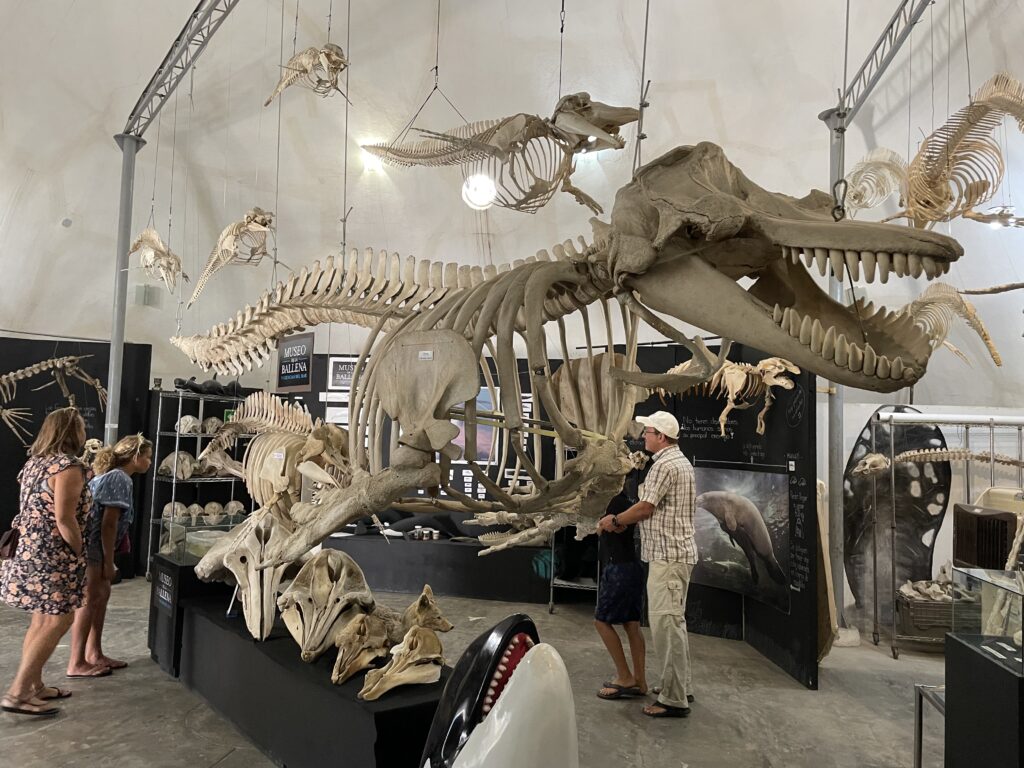
The guide told us that manatees are cousins to the elephant, and manatees are where the mermaid myth originated. Manatees eat sea grass, so often they were sighted with grass on their heads, which could look like hair. The guide said that in the Spanish explorers logs they wrote that Mexican mermaids were ugly. As an FYI, manatees are found on the Yucatan side of Mexico, not on the Pacific side.
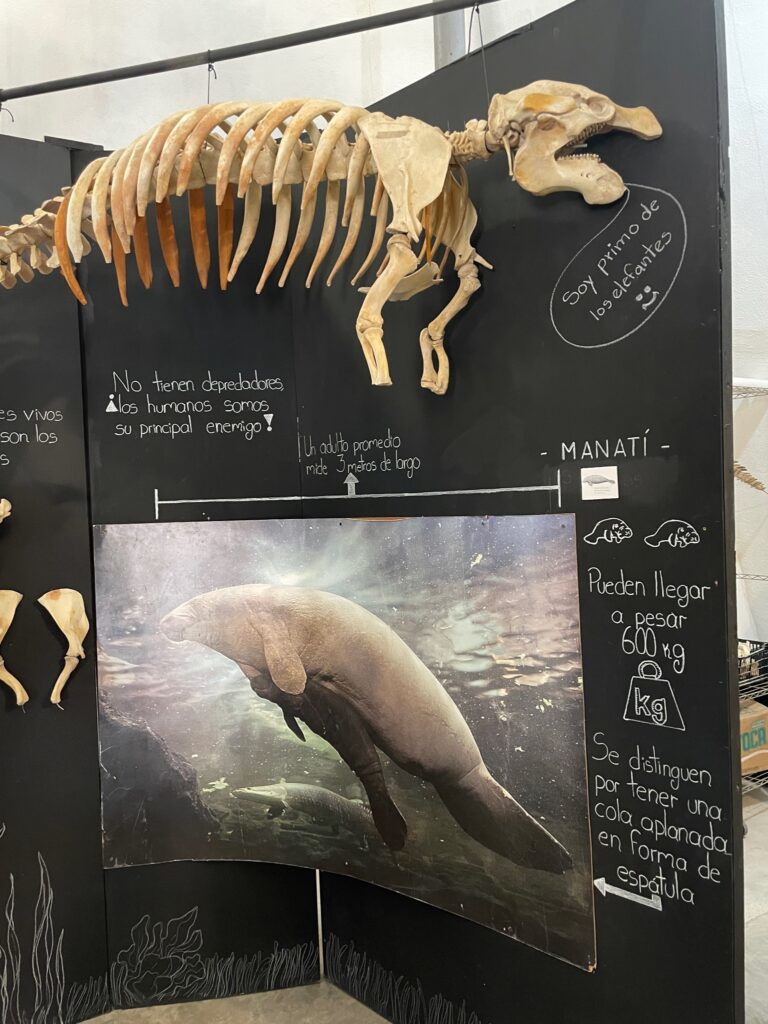
Next was the sea lion exhibit, where he explained the differences between seals and sea lions — sea lions have large flippers that they can walk on and visible ear flaps.
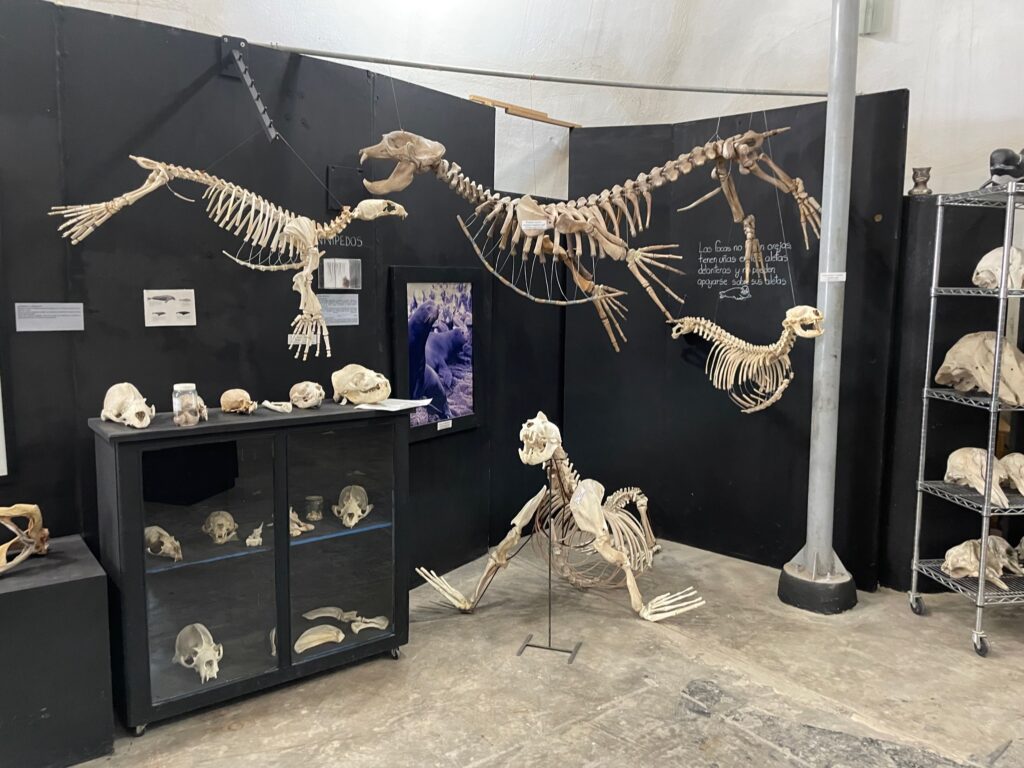
Last was the turtle/tortoise display. The guide is standing next to a tortoise, which are land animals. Turtles are sea animals. Turtles lay their eggs on the same beach they were born on. Newborn turtles run from the shore into the water. The babies need to have the sand print on their flippers to remember which beach to return to for egg laying. Only 1 or 2 out of 100 turtles eggs survive to adulthood. Baby turtle shells are soft cartilage that solidify as they grow. The babies are vulnerable to everything — even ants! Turtles were endangered species a few years ago, but there have been many conservation efforts put into place that are working, such as environmentalists protecting nests, so now the turtle population is increasing.
One of the biggest issues is plastic bags in the water. Turtles will eat plastic bags thinking they are jellyfish. Their stomachs fill up with plastic that doesn’t digest. Then they can’t eat anymore and die of starvation.
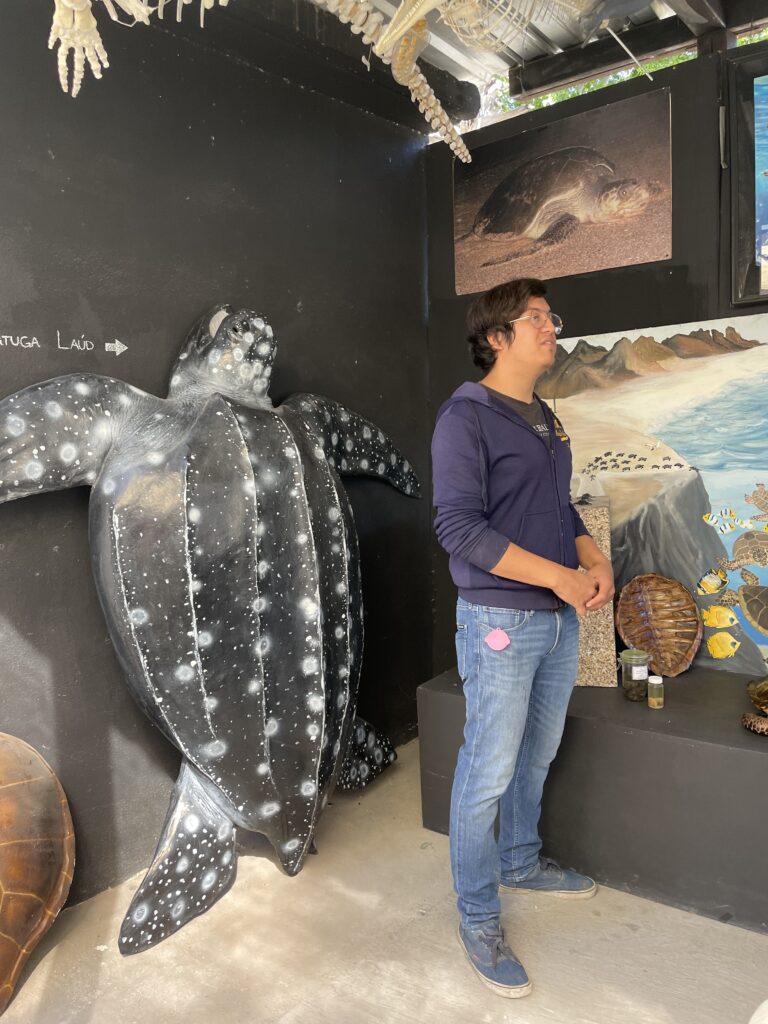
We got back from the museum at about 12:45 pm. The boat waxer reported that he would be done in a few minutes. When we went inside, we noticed that the refrigerator/freezer was off. Eric realized that the inverter had shut down. He started the generator and realized there appeared to be something seriously wrong. To be continued…
